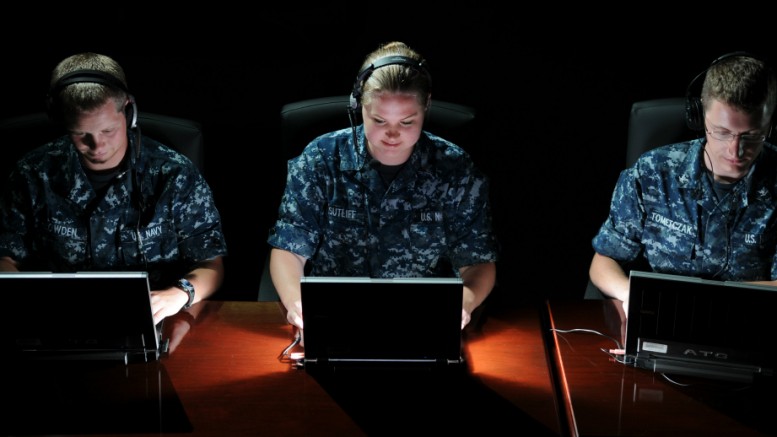(Cyberwar.news) Recent attacks in Europe inspired or sponsored by the Islamic State aside, the effort against the self-declared Islamic caliphate has seen much progress in recent weeks as more territory is re-conquered in Iraq and Syria.
But according to top U.S. defense officials, the fight against ISIS is not only taking place on the physical battlefield, but also in cyberspace.
In the latter part of July officials from several nations including member of NATO met at Joint Base Andrews, Maryland, to discuss progress against ISIS and the campaign’s next phase to, in the words of Defense Secretary Ash Carter, “deliver [the group] a lasting defeat.”
“We reviewed and agreed on the next plays in the campaign, which, while … I can’t discuss them publicly yet, culminate in the collapse of ISIL’s control over the cities of Mosul [in Iraq] and Raqqa [in Syria],” Carter said at a July 25 news conference, using an alternative acronym for the Islamic State group. “And we identified the capabilities and support required to execute those next plays.
“Many countries, including the United States, have recently committed to make additional contributions to the campaign, and some of those commitments were made just last week. And I expect we will be hearing from others in the weeks and months ahead,” he added.
In particular, the fight against ISIS has been joined in cyberspace. That has included offensive operations, targeting command-and-control infrastructure as well as communication, as well as counter-messaging campaigns to counter the group’s propaganda efforts which are largely used for recruiting new fighters. Cyber Command is in charge of these operations, working with Central Command, which is responsible for much of the Middle East.
“CENTCOM’s activities are closely coordinated amongst our Coalition partners and the interagency in direct support of the U.S. Government’s counter-ISIL strategy,” a spokesperson said in an email to C4ISRNET.
“The combined weight of our efforts is, in fact, disrupting ISIL’s ability to convey their propaganda and brand on social media. As the Coalition continues to degrade and ultimately defeat ISIL, CENTCOM’s counter-ISIL operations, including those on social media, will continue to take the fight to the enemy and keep them on the defensive,” the spokesperson added.
Because cyber operations are very sensitive, details about what the Pentagon is doing specifically to target ISIS are hard to come by. But DoD officials did confirm to C4ISRNET that the battle against ISIS is indeed taking place in cyberspace as well.
Recently, NATO declared cyberspace a battle domain, and other military and defense experts have said it will be a major aspect of U.S. and other great-nation warfare for the foreseeable future.
More:
- U.S. Widening Cyber War Against ISIS, Targeting Finances, Command And Control
- Pentagon’s Cyber Attacks Against ISIS Are Far More Extensive Than Anyone Has Admitted
- ISIS ‘Actively’ Seeking Tools To Launch Cyber Attacks: DOJ
Cyberwar.news is part of USA Features Media.



